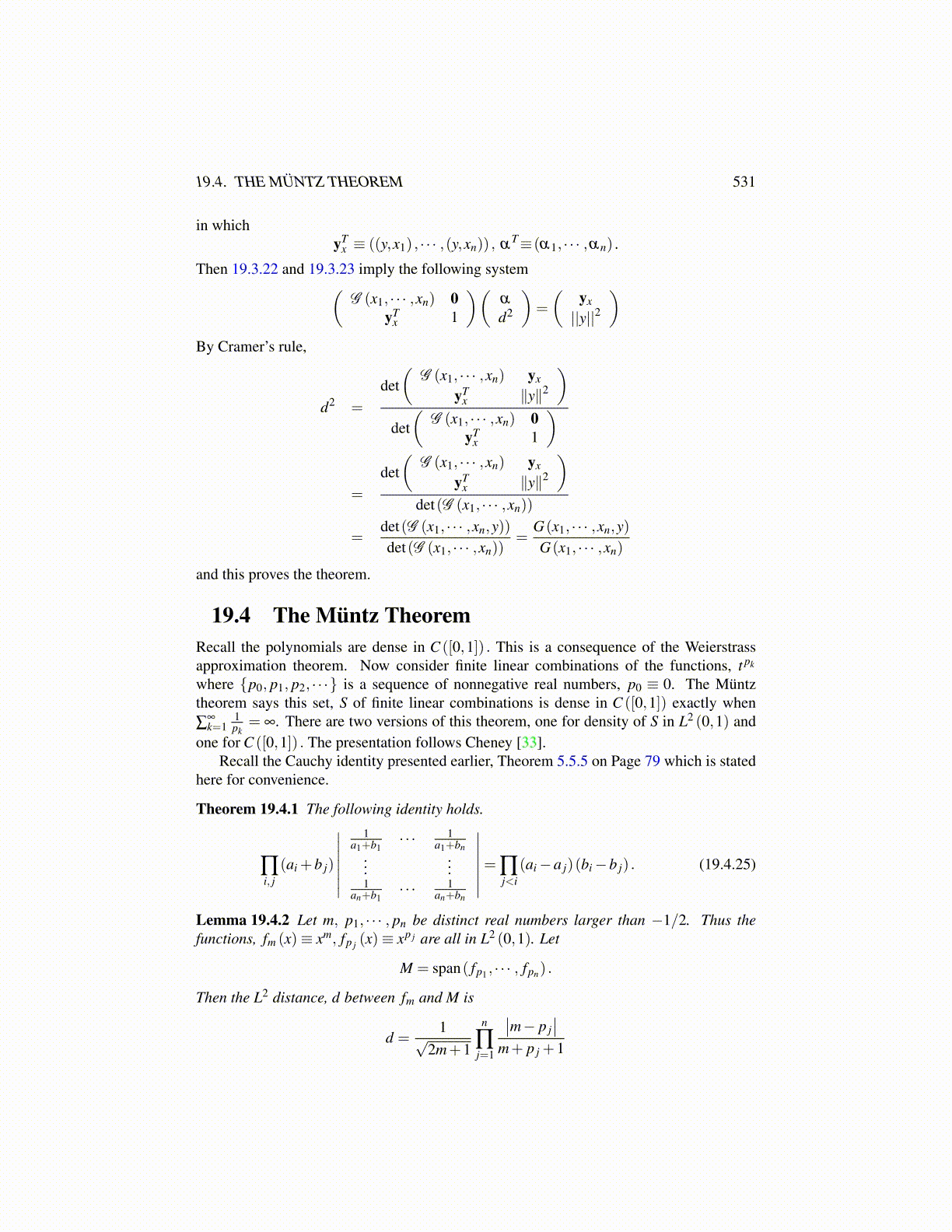
19.4. THE MÜNTZ THEOREM 531
in whichyT
x ≡ ((y,x1) , · · · ,(y,xn)) , αT≡(α1, · · · ,αn) .
Then 19.3.22 and 19.3.23 imply the following system(G (x1, · · · ,xn) 0
yTx 1
)(α
d2
)=
(yx
||y||2)
By Cramer’s rule,
d2 =
det(
G (x1, · · · ,xn) yx
yTx ∥y∥2
)det(
G (x1, · · · ,xn) 0yT
x 1
)
=
det(
G (x1, · · · ,xn) yx
yTx ∥y∥2
)det(G (x1, · · · ,xn))
=det(G (x1, · · · ,xn,y))det(G (x1, · · · ,xn))
=G(x1, · · · ,xn,y)G(x1, · · · ,xn)
and this proves the theorem.
19.4 The Müntz TheoremRecall the polynomials are dense in C ([0,1]) . This is a consequence of the Weierstrassapproximation theorem. Now consider finite linear combinations of the functions, t pk
where {p0, p1, p2, · · ·} is a sequence of nonnegative real numbers, p0 ≡ 0. The Müntztheorem says this set, S of finite linear combinations is dense in C ([0,1]) exactly when∑
∞k=1
1pk
= ∞. There are two versions of this theorem, one for density of S in L2 (0,1) andone for C ([0,1]) . The presentation follows Cheney [33].
Recall the Cauchy identity presented earlier, Theorem 5.5.5 on Page 79 which is statedhere for convenience.
Theorem 19.4.1 The following identity holds.
∏i, j
(ai +b j)
∣∣∣∣∣∣∣1
a1+b1· · · 1
a1+bn...
...1
an+b1· · · 1
an+bn
∣∣∣∣∣∣∣= ∏j<i
(ai−a j)(bi−b j) . (19.4.25)
Lemma 19.4.2 Let m, p1, · · · , pn be distinct real numbers larger than −1/2. Thus thefunctions, fm (x)≡ xm, fp j (x)≡ xp j are all in L2 (0,1). Let
M = span( fp1 , · · · , fpn) .
Then the L2 distance, d between fm and M is
d =1√
2m+1
n
∏j=1
∣∣m− p j∣∣
m+ p j +1